
Clusia is the type genus of the plant family Clusiaceae. Comprising 300-400 species, it is native to the Neotropics. The genus is named by Carl Linnaeus in honor of the botanist Carolus Clusius.
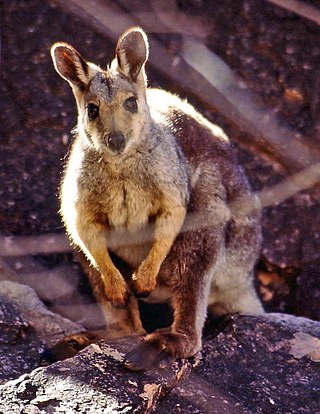
The black-flanked rock-wallaby, also known as the black-footed rock-wallaby or warru, is a species of wallaby, one of several rock-wallabies in the genus Petrogale. A shy, nocturnal herbivore, its two main subspecies are found in mostly isolated populations across western and southern Western Australia (WA), the Northern Territory and parts of South Australia (SA). With some subspecies showing a decline in populations in recent years, the whole species is classed as an endangered species under the Commonwealth EPBC Act.

Clusia rosea, the autograph tree, copey, cupey, balsam apple, pitch-apple, and Scotch attorney, is a tropical and sub-tropical flowering plant species in the family Clusiaceae. The name Clusia major is sometimes misapplied to this species.

Clusia is a genus of flies in the family Clusiidae. There are about 12 described species in Clusia.

Clusia major is a tropical plant species in the genus Clusia. The name Clusia major is sometimes misapplied to the more widely distributed species Clusia rosea, which, however has petiolate, very dark green leaves that are widest just below the apex, and 8 stigmas. Fruits of C. rosea are about as long as wide.

Sericoderus lateralis is a species of minute hooded beetle in the family Corylophidae. It is found in Africa, Australia, Europe and Northern Asia, North America, and Southern Asia.
Nysson lateralis is a species of wasp in the family Bembicidae, found in North America.

Tettigidea lateralis, known generally as black-sided pygmy grasshopper, is a species of pygmy grasshopper in the family Tetrigidae. Other common names include the black-sided grouse locust and sedge grouse locust. It is found in the Caribbean Sea, North America, and parts of Central America.
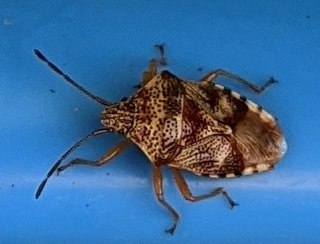
Elasmucha lateralis is a species of shield bug in the family Acanthosomatidae. It is found in North America.
Brachycentrus lateralis is a species of humpless casemaker caddisfly in the family Brachycentridae. It is found in North America.
Lopidea lateralis is a species of plant bug in the family Miridae. It is found in North America.
Clusia czernyi is a species of fly in the family Clusiidae.
Piesocorynus lateralis is a species of fungus weevil in the beetle family Anthribidae. It is found in Central America and North America.
Chrysobothris lateralis is a species of metallic wood-boring beetle in the family Buprestidae. It is found in Central America and North America.

Sweltsa lateralis, the curved sallfly, is a species of green stonefly in the family Chloroperlidae. It is found in North America.
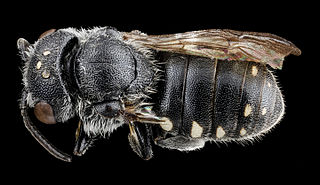
Stelis lateralis is a species of cuckoo bee in the family Megachilidae. It is found in Central America and North America.
Corimelaena lateralis is a species of ebony bug in the family Thyreocoridae. It is found in Central America and North America.
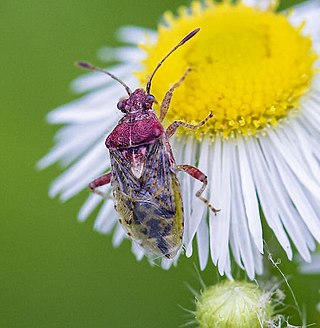
Arhyssus lateralis is a species of scentless plant bug in the family Rhopalidae. It is found in Central America and North America.

Cercyon lateralis is a species of water scavenger beetle in the family Hydrophilidae. It is found in North America and Europe.
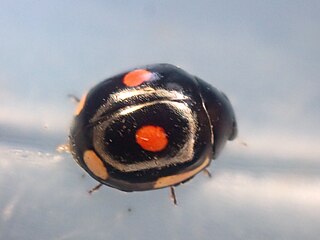
Hyperaspis lateralis, the lateral lady beetle, is a species of lady beetle in the family Coccinellidae. It is found in Central America and North America.















